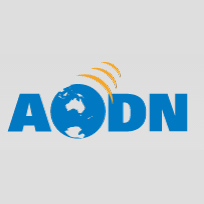Full description
The Aqua satellite platform carries a MODIS sensor that observes sunlight reflected from within the ocean surface layer at multiple wavelengths. These multi-spectral measurements are used to infer the concentration of chlorophyll-a (Chl-a), most typically due to phytoplankton, present in the water. An empirical relationship is then used to compute an estimate of the relative abundance of three phytoplankton size classes (micro, nano and picoplankton).The methods used to decompose chl_oc3 are described by Brewin et al in two papers in 2010 and 2012. The two methods, denoted Brewin2010at and Brewin2012in, used calibration data from the Atlantic and Indian Oceans respectively. Users should note that these are unvalidated experimental products and they should familiarise themselves with the underlying algorithms and methodologies described in the published literature before making use of them.
The data are produced from the same data stream as the MODIS Chla_oc3 data set (https://catalogue-imos.aodn.org.au:443/geonetwork/srv/api/records/d7a14921-8f3f-4522-9a54-e7d1df969c8a).
Data are provided as two files per day, one with the percentage of nanoplankton, and one for picoplankton. The percentage of microplankton is computed as the balance to 100%, that is %micro = 100 - %nano - %pico.
Production of contemporary MODIS data ceased at 2024/12/26. Users requiring similar Ocean Colour Radiometry data beyond 2024 should consider the VIIRS instruments on the SNPP and NOAA20+ series of satellites, also provided by IMOS.
Lineage
Statement: The radiometric sensitivity of the MODIS sensor is evolving continuously during its mission and is monitored regularly by NASA. The SeaDAS software uses tables of calibration coefficients that are updated periodically. From time to time upgrades to the algorithms and/or the format of the calibration tables are required, in which case a new version of SeaDAS is released. These data were updated on 1 September 2020 to use processing in SeaDAS v7.5 and between 2002/07/04 and 2022/06/30 are consistent with the R2018.0 reprocessing (https://oceancolor.gsfc.nasa.gov/reprocessing/r2018/aqua/). Data between 2022/07/01-2023/01/31 and then from 2023/02/01 onwards, have been processed with two more recent releases of SeaDAS and are yet to be fully verified for consistency with NASA’s most recent processing(s). Production of contemporary MODIS data ceased at 2024/12/26. Users requiring similar Ocean Colour Radiometry data beyond 2024 should consider the VIIRS instruments on the SNPP and NOAA20+ series of satellites, also provided by IMOS. It is anticipated that during 2025 IMOS will complete a reprocessing of the entire MODIS archive from 2002/07/04 – 2024/12/26 that will be consistent throughout with the latest recommended NASA processing version. The data are produced by combining the near real time (nrt) data stream from all the available direct broadcast reception stations in Australia with delayed-mode data from NASA in the US. The data have been remapped from satellite projection into a geographic (Latitude/Longitude axes) projection (0.01 degree sampling) and are presented as a sequence of daily mosaics covering the region (80 <= Longitude <= 180, -60 <= Latitude <= +10) formatted as CF-compliant netCDF files. It should be noted that the data are not processed until the definitive spacecraft ephemeris becomes available, usually 12-24 hours after the overpass. This means that the geolocation should be of a uniformly high standard. The filenames are of the form A.P1D.Notes
CreditAustralia’s Integrated Marine Observing System (IMOS) is enabled by the National Collaborative Research Infrastructure Strategy (NCRIS). It is operated by a consortium of institutions as an unincorporated joint venture, with the University of Tasmania as Lead Agent.
CSIRO Oceans and Atmosphere
Curtin University
Created: 04 11 2014
Data time period: 04 07 2002 to 2024-12-26
text: westlimit=80.00; southlimit=-60.00; eastlimit=179.90; northlimit=10.00
User Contributed Tags
Login to tag this record with meaningful keywords to make it easier to discover
(NetCDF files via THREDDS catalog)
uri :
http://thredds.aodn.org.au/thredds/catalog/IMOS/SRS/OC/gridded/aqua/P1D/catalog.html![]()
(Satellite Remote Sensing page on IMOS website)
uri :
http://imos.org.au/srs.html![]()
(View and download data though the AODN Portal)
uri :
https://portal.aodn.org.au/search?uuid=9fde091c-9d38-4b2f-ba23-c262c21a41a2![]()
SRS - OC3 - Nanoplankton 2012 - WMS layer (srs_oc_aqua_nanop_brewin2012in_url/nanop_brewin2012in)
uri :
http://geoserver-123.aodn.org.au/geoserver/ncwms![]()
The GoGoDuck subsets and aggregates gridded data. Data is returned as a NetCDF file. (srs_oc_aqua_nanop_brewin2012in_url)
uri :
https://processes.aodn.org.au/wps![]()
(GoGoDuck help documentation)
uri :
https://help.aodn.org.au/web-services/gogoduck-aggregator/![]()
The ncUrlList is a WFS service that returns a list of URLs matching a query. (srs_oc_aqua_nanop_brewin2012in_url#file_url)
uri :
http://geoserver-123.aodn.org.au/geoserver/ows![]()
(ncUrlList help documentation)
uri :
https://help.aodn.org.au/web-services/ncurllist-service/![]()
(Access To AWS Open Data Program registry for the Cloud Optimised version of this dataset)
uri :
https://registry.opendata.aws/aodn_satellite_nanoplankton_fraction_oc3_1day_aqua/![]()
(Access to Jupyter notebook to query Cloud Optimised converted dataset)
global : 8209bf83-0c3c-4fbe-9f36-41f7a5ee9913
- global : 9fde091c-9d38-4b2f-ba23-c262c21a41a2


